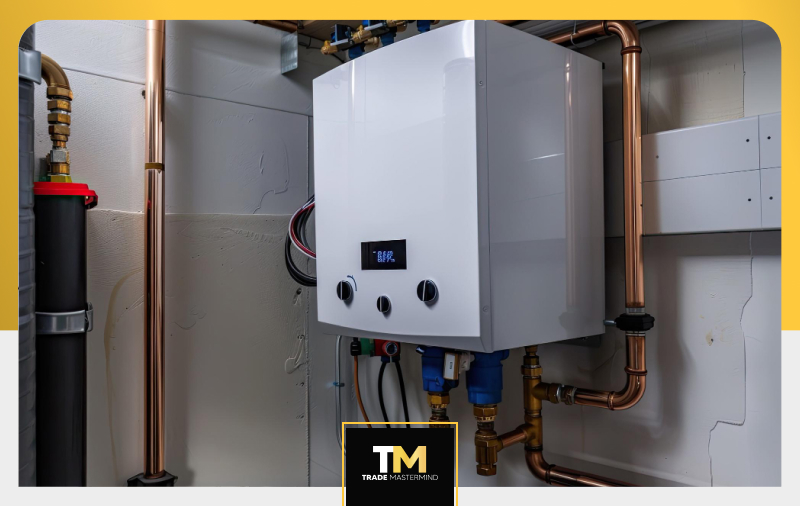Introduction
As electric vehicles (EVs) become increasingly popular, the demand for EV charger installation is on the rise for both residential and commercial properties. However, the requirements, costs, and complexities involved in installing EV chargers differ significantly between homes and businesses. This blog post will explore the key differences between residential and commercial EV charger installation, helping you make informed decisions based on your specific needs.
1. Power and Charging Speed
- Residential EV Chargers:
- Typically operate at lower power levels, ranging from 3.7 kW to 11 kW.
- Utilize Level 1 (120V) or Level 2 (240V) charging. Level 1 chargers are slow, often taking 10 or more hours to recharge a car battery. Level 2 chargers can charge an EV in about 4–5 hours.
- Suitable for overnight charging when vehicles are idle for extended periods.
- Commercial EV Chargers:
- Support higher power outputs, often ranging from 11 kW to 50 kW or more.
- Primarily use Level 2 charging but may also include DC fast chargers (Level 3). DC fast chargers can charge an EV in as little as 30–60 minutes.
- Designed to provide quicker charging times, accommodating multiple vehicles throughout the day.
2. Installation Costs
- Residential EV Charger Installation:
- Generally less expensive due to lower power requirements and simpler electrical setups.
- Costs include the charging unit, electrical capacity upgrades, permits, and labor.
- Level 1 chargers are the least expensive, as they use a standard 120V outlet. Level 2 chargers require heavy-duty wiring, circuit breakers, and a separate EV charger, increasing costs.
- Commercial EV Charger Installation:
- More costly due to higher power demands, complex installations, and additional infrastructure requirements.
- May require electrical panel upgrades, trenching, and the installation of multiple chargers.
- Businesses may need to obtain permits and approvals from local authorities.
3. Electrical Infrastructure
- Residential EV Chargers:
- May require minor electrical upgrades, such as dedicated circuits or panel upgrades, depending on the home’s existing capacity.
- Electricians can combine underused circuits or replace double-pole breakers with single-pole breakers to free up space in the electrical panel.
- Commercial EV Chargers:
- Often necessitate significant electrical infrastructure improvements to handle the increased load.
- May involve upgrading transformers, running new conduit, and ensuring compliance with local electrical codes.
- Proper assessment of the building’s electrical capacity is crucial before installation.
4. Location and Accessibility
- Residential EV Chargers:
- Typically installed in garages, driveways, or on the side of the house.
- Placement depends on proximity to the electrical panel and convenience for the EV owner.
- Outdoor chargers require weather-resistant enclosures.
- Commercial EV Chargers:
- Installed in various locations, including parking lots, shopping malls, workplaces, and public spaces.
- Strategic placement can attract customers and support employees.
- Accessibility is a key consideration, ensuring chargers are available to a wide range of users.
5. Charger Types and Features
- Residential EV Chargers:
- Primarily Level 1 and Level 2 chargers.
- Some chargers offer smart features like Wi-Fi connectivity, remote monitoring, and programmable charging schedules to optimize energy use and costs.
- Commercial EV Chargers:
- Include Level 2 chargers and DC fast chargers.
- Often equipped with advanced features such as payment systems, user authentication, and energy management capabilities.
- Smart chargers allow businesses to monitor and manage power usage remotely, taking advantage of off-peak periods to save on electricity costs.
6. Permits and Regulations
- Residential EV Chargers:
- May require electrical permits depending on local regulations.
- Homeowners should check with their local authorities to ensure compliance with building codes and safety standards.
- Commercial EV Chargers:
- Subject to more stringent permitting and regulatory requirements.
- Businesses may need to obtain approvals from planning departments, environmental agencies, and utility companies.
- Compliance with the Americans with Disabilities Act (ADA) is essential to ensure accessibility for all users.
7. Usage and Scalability
- Residential EV Chargers:
- Designed for personal use, typically charging one or two vehicles.
- Scalability is less of a concern as the charging needs are relatively stable.
- Commercial EV Chargers:
- Intended for multiple users and varying charging demands.
- Businesses should consider future scalability when planning their EV charger installation, anticipating increased EV adoption and the need for additional charging stations.
8. Maintenance and Support
- Residential EV Chargers:
- Require minimal maintenance.
- Homeowners can perform basic troubleshooting and maintenance tasks.
- Professional servicing may be needed for complex repairs.
- Commercial EV Chargers:
- Demand regular maintenance to ensure optimal performance and uptime.
- Businesses should establish a maintenance plan that includes routine inspections, software updates, and prompt repairs.
- Service contracts with qualified technicians can provide ongoing support and peace of mind.
9. Government Incentives and Rebates
- Residential EV Chargers:
- Homeowners may be eligible for federal, state, and local incentives such as tax credits and rebates to offset installation costs.
- These incentives can significantly reduce the financial burden of installing a home EV charger.
- Commercial EV Chargers:
- Businesses can take advantage of various government programs to lower the cost of EV charger installation.
- Incentives may include grants, tax credits, and rebates for purchasing and installing commercial EV chargers.
- Taking advantage of these incentives can improve the return on investment for businesses looking to support sustainability and attract customers.
Conclusion
Understanding the differences between residential and commercial EV charger installation is essential for making informed decisions that meet your specific needs. Residential installations are simpler and less expensive, ideal for personal use and overnight charging. Commercial installations require more robust infrastructure, advanced features, and compliance with stringent regulations but offer potential benefits such as attracting customers, supporting employees, and promoting sustainability. By carefully evaluating these factors, you can choose the right EV charging solution that positions you well for the future of electric vehicles.






